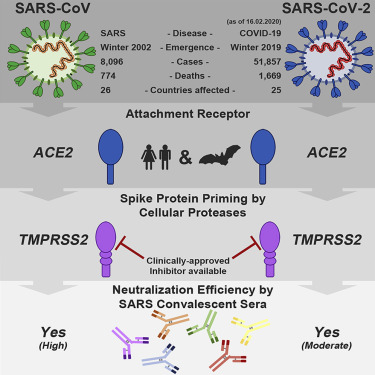The terms SARS-CoV-2 and COVID-19 are often used interchangeably, but they are not the same thing. Understanding the distinction between them is crucial, especially when discussing the ongoing impact of the pandemic, research advancements, and public health measures. As the world continues to adapt to living with COVID-19, it is vital to clarify these terms and why their distinction matters. In this article, we will explore SARS-CoV-2, COVID-19, their differences, and their broader implications for public health and future preparedness.
What is SARS-CoV-2?
SARS-CoV-2 (Severe Acute Respiratory Syndrome Coronavirus 2) is the virus responsible for causing COVID-19. It belongs to the family of coronaviruses, which includes other viruses like SARS-CoV (the virus behind the 2002-2004 SARS outbreak) and MERS-CoV (which caused Middle East Respiratory Syndrome). Coronaviruses are named for their crown-like spikes on their surfaces, which help them attach to and infect host cells.
SARS-CoV-2 is highly transmissible and has caused one of the largest global pandemics in modern history. It primarily spreads through respiratory droplets when an infected person coughs, sneezes, or talks, making it highly contagious. The virus can also linger in the air in enclosed spaces, making airborne transmission another concern, particularly in poorly ventilated areas. Additionally, SARS-CoV-2 can survive on surfaces for extended periods, though surface transmission is considered less significant compared to airborne spread.
Key Characteristics of SARS-CoV-2:
-
Type: A novel coronavirus (discovered in 2019), genetically related to SARS-CoV.
-
Transmission: Spreads primarily through respiratory droplets, aerosols, and contaminated surfaces. It can be transmitted through close contact with an infected person, making it highly contagious. In some cases, airborne transmission has also been observed, especially in enclosed spaces with poor ventilation.
-
Mutation: Has undergone multiple mutations, leading to variants such as Alpha, Delta, and Omicron. Some of these variants have affected the virus’s transmissibility and severity, leading to waves of infections worldwide.
-
Detection: Identified through PCR and antigen tests. These tests detect the genetic material or proteins from the virus in the body. Serology tests may also be used to check for antibodies in those who have been infected or vaccinated.
-
Immune Response: The human immune system responds to SARS-CoV-2 by producing antibodies and activating immune cells to combat the infection. Vaccines are designed to boost this immune response and provide protection. However, breakthrough infections can occur, especially with newer variants.
What is COVID-19?
COVID-19 (Coronavirus Disease 2019) is the illness caused by the SARS-CoV-2 virus. It primarily affects the respiratory system but can also lead to complications in other organs, including the heart, kidneys, and brain. The severity of the disease varies from mild to severe, with some cases resulting in hospitalization or death. COVID-19 has had long-lasting effects on many people, with some experiencing persistent symptoms for months, commonly referred to as Long COVID.
Symptoms of COVID-19:
-
Fever
-
Cough
-
Shortness of breath
-
Fatigue
-
Loss of taste or smell
-
Body aches
-
Sore throat
-
Headache
-
Digestive symptoms such as nausea or diarrhea
-
Severe cases: Pneumonia, acute respiratory distress syndrome (ARDS), organ failure, blood clotting disorders, and long-term health effects (Long COVID)
Risk Factors for Severe COVID-19:
-
Advanced age (older adults are more vulnerable)
-
Pre-existing health conditions such as diabetes, heart disease, obesity, and weakened immune systems
-
Smoking and other lung-related illnesses
-
Lack of vaccination or prior immunity
-
Occupational exposure to infected individuals (healthcare workers, essential workers, etc.)
Long COVID
Long COVID refers to a range of symptoms that persist weeks or months after the initial infection. These symptoms can include fatigue, brain fog, difficulty breathing, joint pain, and heart issues. Researchers are still studying why some people develop long-term effects while others recover fully. Some studies suggest that viral persistence, immune dysregulation, or damage to organ systems could be contributing factors.
COVID-19 vs. Other Coronavirus Diseases:
| Disease | Virus | First Identified | Severity |
|---|---|---|---|
| SARS | SARS-CoV | 2002 | High mortality, limited spread |
| MERS | MERS-CoV | 2012 | High mortality, regional outbreaks |
| COVID-19 | SARS-CoV-2 | 2019 | Global pandemic, variable severity |
Why the Distinction Matters
While SARS-CoV-2 is the virus, COVID-19 is the disease it causes. The distinction is similar to how HIV is the virus that causes AIDS. Understanding this difference is important for several reasons:
-
Research and vaccine development: Scientists target SARS-CoV-2 when developing treatments and vaccines. Knowing that COVID-19 is the disease helps in tracking and managing symptoms.
-
Public health policies: Addressing COVID-19 prevention and treatment requires strategies to control the spread of SARS-CoV-2, such as vaccination, mask-wearing, and social distancing.
-
Testing and treatment strategies: Diagnostic tests identify SARS-CoV-2, while treatment focuses on managing COVID-19 symptoms and complications.
-
Public Awareness: Educating people about the difference between the virus and the disease can help combat misinformation and improve adherence to safety protocols.
Global Impact and Future Considerations
The emergence of SARS-CoV-2 and the resulting COVID-19 pandemic has had significant global consequences. Health systems were overwhelmed, economies suffered disruptions, and social behaviors changed dramatically. Vaccination campaigns and public health measures have helped curb the spread, but new variants continue to pose challenges. Ongoing research is focused on improving treatments, understanding long-term effects, and developing next-generation vaccines.
The Future of COVID-19 Management
-
Booster shots and evolving vaccines: With new variants emerging, updated vaccines and booster shots may be necessary for continued protection.
-
Herd immunity and endemic status: Many experts believe that COVID-19 will become an endemic virus, meaning it will continue to circulate like the flu but with manageable risks.
-
New treatment options: Antiviral drugs, monoclonal antibodies, and other treatments are continuously being researched to reduce the severity of infections.
-
Strengthening healthcare systems: Governments and health organizations are working on improving global pandemic preparedness to prevent future outbreaks.
Conclusion
SARS-CoV-2 and COVID-19 are closely linked but different in definition. SARS-CoV-2 is the virus, while COVID-19 is the disease it causes. Keeping this distinction clear helps in effective communication about the pandemic, healthcare strategies, and scientific advancements. As research continues, understanding these differences remains essential in managing public health responses and preventing future outbreaks. With continued vigilance and medical advancements, the world can work towards better preparedness for similar challenges in the future.
By staying informed, following public health guidelines, and supporting scientific research, we can collectively mitigate the impact of SARS-CoV-2 and ensure a healthier future for all.



